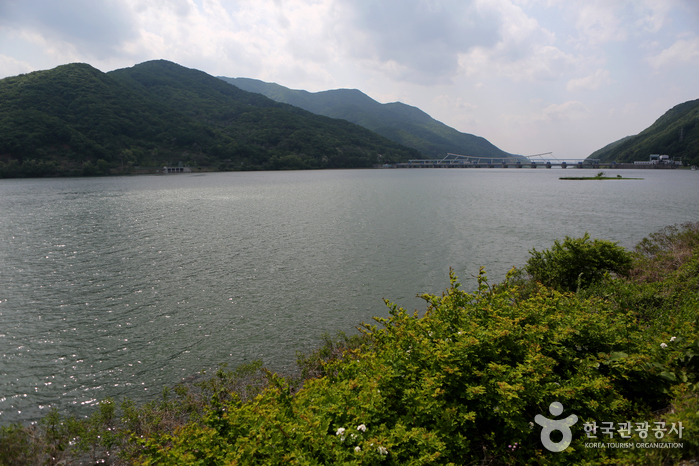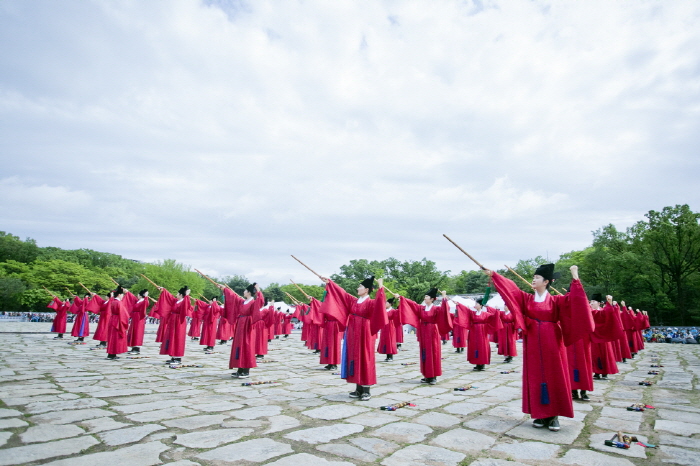WOOA Plastic Surgery (우아성형외과의원)
16.3Km 2025-07-07
B1 & 1F-3F, 825 Nonhyeon-ro, Gangnam-gu, Seoul
WOOA Plastic Surgery was formerly Regen Plastic Surgery and Dermatology in Apgujeong. It is run according to the treatment philosophy of Director Woo-jung Kim, the founder of Regen Plastic Surgery who earned a doctorate in plastic surgery at Seoul National University.
WOOA Plastic Surgery is a global comprehensive beauty brand encompassing plastic surgery, dermatology, and cosmetics, with the vision of providing responsible medical services and realizing elegant beauty for each patient.
The clinic is committed to ceaseless research with the goal of becoming a leading medical institution that produces leaders to drive medical developments in Korea. It aims to become a global comprehensive beauty brand, with employees who all prioritize customers' safety and rapid recovery.
Paldangho Lake (팔당호)
16.3Km 2021-05-25
Namjong-myeon, Gwangju-si, Gyeonggi-do
+82-31-760-2000
Paldangho, a man-made lake, lies beside the townships of Toechon-myeon and Namjong-myeon in Gwangju-si, Gyeonggi-do. Completed in 1973, this reservoir stores approximately 250 million tons of water, which is supplied to the Seoul and Gyeonggi regions. It is also one of Gwangju's tourist attractions, offering an inspiring view and a scenic lakeside drive. Don’t miss a stop at the Paldang Observatory for a breathtaking view of Paldangho Lake.
Jongmyodaeje (Royal Ancestral Memorial Rite of Joseon) (종묘대제)
16.3Km 2022-10-05
157, Jong-ro, Jongno-gu, Seoul
• 1330 Travel Hotline: +82-2-1330 (Korean, English, Japanese, Chinese) • For more info: +82-2-3210-4806, +82-2-6011-1067
Jongmyodaeje, Korea’s Royal Ancestral Memorial Rite, is a traditional ritual that has been recognized with many important designations. It is a UNESCO Masterpiece of the Oral and Intangible Heritage of Humanity, Important Intangible Cultural Property No. 56 (Jongmyo Jerye), and Korea’s Important Intangible Cultural Property No. 1 (Jongmyo Jeryeak). The ritual is held yearly on the first Sunday of May. It begins with eogahaengnyeol, the fabulous royal parade dating from the Joseon dynasy, which is truly a sight to behold as it moves through the modern city.
Jongmyodaeje originated as a royal ancestral ritual to honor the past kings and queens of the Joseon dynasty. During the Joseon era, the ritual was held five times a year (spring, summer, autumn, winter, and December) until it was abolished by Japanese colonial rule. In 1969, Jongmyodaeje was reinstated and has been held in May every year since.
Jongmyo Shrine, the destination of the procession, was the setting of ceremonial rituals during the Joseon dynasty. Originally, Jongmyo only referred to Jeongjeon (Main Hall) where the memorial tablets of Joseon’s reigning kings and queens are enshrined. Today, however, Jongmyo also encompasses Yeongnyeongjeon (Hall of Eternal Peace) where the tablets of posthumous kings and queens are enshrined and Gongsindang (Hall of Meritorious Subjects) where the tablets of esteemed ministers of the state are kept.
Iwant Plastic Surgery Clinic [Tax Refund Shop] (아이원성형외과)
16.3Km 2024-04-23
4F, 823, Nonhyeon-ro, Gangnam-gu, Seoul
-
Been Bluetail - Apgujeong Branch [Tax Refund Shop] (빈블루테일 압구정)
16.4Km 2024-06-26
6, Nonhyeon-ro 155-gil, Gangnam-gu, Seoul
-
KstarROAD 한류스타거리 (KstarROAD Hallyu Star Road)
16.4Km 2024-03-05
394, Apgujeong-dong, Gangnam-gu, Seoul
The K-Star ROAD is a place to meet the stories of celebrities who were at the forefront of the K-Wave phenomenon. The road features art toy statues inspired by K-Pop bands, such as SNSD, EXO, and TVXQ, while terminals next to shops help you find the fashion shops and restaurants frequented by celebrities. Moreover, the schools attended by the celebrities, houses in which they used to live, and other spots that capture their stories can also be found on this street.
Changdeokgung Palace Complex [UNESCO World Heritage Site] (창덕궁과 후원 [유네스코 세계문화유산])
16.4Km 2025-01-17
99 Yulgok-ro, Jongno-gu, Seoul
Changdeokgung Palace was the second royal villa built following the construction of Gyeongbokgung Palace in 1405. It was the principal palace for many kings of the Joseon dynasty, and is the most well-preserved of the five remaining royal Joseon palaces. The palace grounds are comprised of a public palace area, a royal family residence building, and the rear garden. Known as a place of rest for the kings, the rear garden boasts a gigantic tree that is over 300 years old, a small pond and a pavilion.
The palace gained importance starting from the time of Seongjong, the 9th king of Joseon, when a number of kings began using it as a place of residence. Unfortunately, the palace was burned down by angry citizens in 1592 when the royal family fled their abode during the Imjin War. Thanks to Gwanghaegun, the palace was restored in 1611. Even today, it houses a number of cultural treasures, such as Injeongjeon Hall, Daejojeon Hall, Seonjeongjeon Hall, and Nakseonjae Hall.
Changdeokgung Palace’s garden behind the inner hall, called the "Secret Garden," was constructed during the reign of King Taejong and served as a rest area for the royal family members. The garden had formerly been called Bugwon and Geumwon, but was renamed Biwon Garden, or Secret Garden, after King Gojong came into power. The garden was kept as natural as possible and was touched by human hands only when absolutely necessary. Buyongjeong Pavilion, Buyongji Pond, Juhamnu Pavilion, Eosumun Gate, Yeonghwadang Hall, Bullomun Gate, Aeryeonjeong Pavilion, and Yeongyeongdang Hall are some of the many attractions that occupy the garden. The most beautiful time to see the garden is during the fall when the autumn foliage is at its peak and the leaves have just started to fall.
Though it has been treasured by Koreans for centuries, Changdeokgung Palace and its complex was recognized as a World Cultural Heritage site by the UNESCO World Cultural Heritage Committee in December of 1997 during the committee meeting in Naples, Italy.
Olive Young - Irwon Station Branch [Tax Refund Shop] (올리브영 일원역)
16.4Km 2024-04-18
Store #114, 115, Irwon-ro, Gangnam-gu, Seoul
-
Himart - Daechi Branch [Tax Refund Shop] (하이마트 대치점)
16.4Km 2024-04-16
156, Samseong-ro, Gangnam-gu, Seoul
-
Jongmyo Shrine [UNESCO World Heritage] (종묘 [유네스코 세계유산])
16.4Km 2024-07-05
157 Jong-ro, Jongno-gu, Seoul
+82-2-765-0195
Jongmyo Shrine was the primary place of worship for kings and their queens throughout the Joseon dynasty. The shrine was built at the same time as Gyeongbokgung Palace, under the orders of King Taejo, the first king of the Joseon dynasty. The shrine is the site of the royal memorial service, called Jongmyo Jaerye, a national event that has been passed down since the Three Kingdoms period. During the Joseon dynasty, the ritual was held on the first month of a seasonal change and the twelfth month of the lunar year.



![Iwant Plastic Surgery Clinic [Tax Refund Shop] (아이원성형외과)](http://tong.visitkorea.or.kr/cms/resource/03/2879703_image2_1.jpg)
![Been Bluetail - Apgujeong Branch [Tax Refund Shop] (빈블루테일 압구정)](http://tong.visitkorea.or.kr/cms/resource/96/3313496_image2_1.jpg)
![Changdeokgung Palace Complex [UNESCO World Heritage Site] (창덕궁과 후원 [유네스코 세계문화유산])](http://tong.visitkorea.or.kr/cms/resource/03/3092503_image2_1.jpg)
![Olive Young - Irwon Station Branch [Tax Refund Shop] (올리브영 일원역)](http://tong.visitkorea.or.kr/cms/resource/54/2889454_image2_1.jpg)
![Himart - Daechi Branch [Tax Refund Shop] (하이마트 대치점)](http://tong.visitkorea.or.kr/cms/resource/70/2889870_image2_1.jpg)
 English
English
 한국어
한국어 日本語
日本語 中文(简体)
中文(简体) Deutsch
Deutsch Français
Français Español
Español Русский
Русский